Free Template Document for Your Branding and Website Project


The work’s only ever as good as the brief 💡
Where do you start when it comes to defining your branding and getting a new website project underway – or refreshing an existing one? Well, that’s what we’re here to tell you. The success of any branding or website project often comes down to one thing: the brief.
It might not sound glamorous, but trust us, getting this right can make all the difference. Whether you’re starting a new brand or giving your current one a glow-up, a brief ensures everyone involved understands the vision and goals of your brand.
This blog will share our advice on branding and website briefs. Oh, and we’ve thrown in two free templates, too. You’re welcome. 😉

Your branding and website brief starts with the basics: who you are, what you do, and where you’re headed. Whether you’re building from scratch or refreshing an existing identity, this section sets the foundation.
Keep it concise. If your brand already exists, provide a quick overview. If it’s new, think of it as an elevator pitch – can you sum up your business in 50–75 words?
Share:
👉 What you offer: Products or services.
👉 Your vibe: Your brand’s personality.
👉 Your history: Any relevant milestones or changes, like entering a new market or updating an outdated logo.
If previous branding or website projects didn’t work out, briefly mention why – but keep the focus on where you want to go next.
Clear and measurable objectives are key:
👉 For branding, it could be doubling sales, entering a new market, or modernising your image.
👉 For websites, goals often include increasing traffic, generating leads, or improving user experience.
If there’s a specific outcome (e.g., increasing sales by 20%), outline it here to guide the project’s direction.
Let us know:
👉 Are there services or products not currently featured?
👉 Any recent business changes?
The more we know, the better we can align your branding and website with your goals. Having a clear main contact ensures communication flows smoothly, and whether it’s a Zoom call or in-person meeting, we’ll work closely to bring your ideas to life.
The more we know about you, the better! This leads us to our next point.
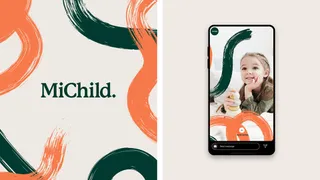
MiChild by MadeByShape
Be upfront about your budget – it saves time and ensures agencies propose solutions that fit.
👉 Branding Costs: Includes strategy, logo design, tone of voice guidelines, and brand assets.
👉 Website Costs: Varies depending on complexity. Bespoke designs cost more, but platforms like Shopify can cut costs for simpler projects.
A strong branding brief outlines the deliverables you expect, such as:
Brand strategy (vision, mission, tone of voice)
Visual identity (logo, typography, colour palette)
Digital and print assets (social media visuals, business cards)
Include specifics like deadlines, key contacts, and award criteria if you’re tendering the project.
For your website, specify features like:
E-commerce functionality
Integrations (e.g., CRM, multilingual support)
Design preferences (e.g., typography, interactive elements, colour palette)
Brand strategy (vision, mission, tone of voice)
Think about whether you need fresh content (copy, images, videos) or will reuse existing materials. Being clear about your deliverables helps streamline the process.
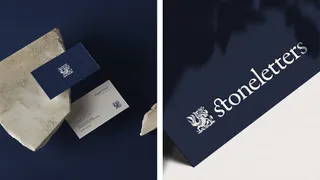
Stoneletters by MadeByShape
Aside from looking great, your branding and website project should have clear objectives. What are you trying to achieve? Some common goals include:
👉For Branding: It might be increasing brand awareness, creating a distinct identity, or redefining your tone of voice.
👉For Your Website: Driving traffic, improving user experience, or increasing conversions.
Clearly outlining your objectives helps agencies prioritise features, designs, and strategies to deliver the results you’ve been looking for.
Your vision statement is your ultimate destination – where you see your business in 5-10 years. It’s all about big dreams and bold ambitions, and it should guide everything from your branding to your website.
To get to the heart of your vision, ask yourself:
What’s your core focus?
What makes you unique?
Who or where do you want to be in five to ten years?
If your vision is where you’re going, your mission is how you’ll get there. It’s all about the value you bring to your audience and the impact you want to make. To define this, Sarah Aboulhosn at Sprout Social suggests asking these key questions:
How does your brand add value to its audience?
What larger impact do you want to achieve?
Are these goals attainable and realistic?
Can the brand embody this vision in every aspect of the organisation?
Zeno Group’s 2020 Strength of Purpose study found that brands with a clear purpose are:
4x more likely to drive purchases
6x more likely to gain loyalty during challenges
4.5x more likely to earn recommendations
So, if you thought having a strong mission didn’t matter, *spoiler alert* – you’re wrong. And with the way audiences are demanding more authenticity and accountability from brands, it’s more important than ever to get this nailed down.
Your brand promise is what your customers should expect every time they interact with you. It’s not just a tagline; it’s a commitment.
But don’t promise the world – that’s where brands often slip up. Take Oatly, for example. They promised to prioritise people and the planet over profit, but in 2020, customers called them out when an investor was linked to deforestation.
Think about:
What do you deliver every single time?
How does this align with customer expectations?
A strong promise builds trust and strengthens your brand’s connection with its audience. And the more you deliver, the stronger that connection becomes.
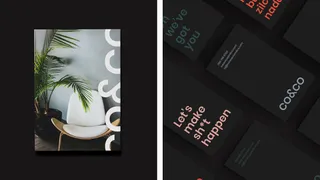
co&co by MadeByShape
There’s no safety in numbers when it comes to brands. That’s why nailing your competitor analysis is key to defining what sets you apart – your unique value proposition.
Your unique value proposition (UVP) is what sets you apart from competitors. It’s not just about having a great product – it’s about being distinct in every aspect of your branding and messaging. But it’s not just about having a different product. Get it right, and your visual identity and tone of voice will stand out too.
What makes your brand unique?
How do your competitors position themselves?
How can your visual identity and tone of voice stand out?
Richard Shotton highlights the power of distinctiveness in The Choice Factory. In one experiment, participants were 30 times more likely to recall a number written in blue compared to a list of black ones. He repeated the test with brands, swapping numbers for logos. The result? People were four times more likely to remember the outlier – a fast-food logo amongst car brands.
It’s fine to take inspiration from brands you admire, but steer clear of copying direct competitors. Writing a brand brief is all about owning your story.
Every great brand tells a story, and your premise is the narrative thread that ties everything together.
Christopher Booker’s “Seven Basic Plots” can inspire your brand’s story:
Overcoming the Monster: Perfect for challenger brands like BrewDog.
The Quest: Think LinkedIn’s mission to create economic opportunity.
Voyage and Return: Ideal for escape-focused brands like Airbnb.
Comedy: Rare, but Cards Against Humanity nails it.
Tragedy: Hinge’s “Designed to be Deleted” story.
Rags to Riches: Classic entrepreneurial tales like Innocent.
Rebirth: Carlsberg’s rebrand: “piss to pilsner.”
Pick a plot, as long as it’s true to your brand, and you’ll create a consistent narrative that stands out. We all know every great story needs characters. What will you choose? 🤔
Your brand persona is your character – the archetype that defines how your brand behaves and communicates. Carl Jung identified 12 archetypes commonly used by brands:
The Innocent: Lighthearted and joyful (e.g. Coca-Cola).
The Rebel: Rule-breakers like Harley-Davidson.
The Lover: Intimate and indulgent (e.g. Magnum).
The Jester: Cheeky and irreverent (e.g. Paddy Power).
The Sage: Trusted sources of truth (e.g. Google).
The Ruler: Commanding authority (e.g. Mercedes-Benz).
The Explorer: Adventurous (e.g. Jeep).
The Magician: Visionary and innovative (e.g. Disney).
The Hero: Inspirational (e.g. Nike).
The Caregiver: Nurturing (e.g. Pampers).
The Creator: Imaginative (e.g. Lego).
The Regular Guy/Girl: Relatable and down-to-earth (e.g. Amazon).
Adding a character to your brand helps define your values, making you more relatable and human. Every brand needs a voice. 🎤
We need to know how to speak to the right people, and so does your brand and website. Understanding your target audience ensures your messaging, visuals, and design connect effectively.
👉 Who are your people? Your branding brief should dive into demographics, pain points, and what makes them excited. The more you know about them, the better you can connect through tone, visuals, and messaging.
👉 Who’s coming to your website, and why? Share everything from demographics to how you want them to feel when they’re browsing.
👉 Who’s your website for? Understanding your audience helps us design something that really works for them.
👉 Who’s visiting your site, and why? What do you want them to think and feel while they’re there? If you’ve got demographic data from tools like Hotjar or Google Analytics, even better.
It’s also helpful to know about any new audiences you want to attract. Your target audience shapes everything – from typography and colour to where we place call-to-action buttons.
Pro tip: If you have demographic data from Google Analytics or other tools, share it in your brief.
Got an old brand or website? Spill the beans on what’s good, bad, and the ugly – and don’t forget to share your branding assets and website URL if you have one.
👉 What’s working? Do you have a logo or colour palette you love? Does your tone of voice resonate with your audience? Let us know what’s worth keeping.
👉 What’s not? Are your visuals outdated, inconsistent, or lacking impact? Has your messaging drifted from your values or audience needs?
👉 What needs improvement? If your branding feels disconnected or fails to stand out, this is the time to share your pain points.
👉 What’s working? Do certain pages or features drive traffic and conversions? Are there elements you’d like to retain, like strong imagery or a successful navigation structure?
👉 What’s not? Is your site slow, clunky, or visually outdated? Does the user experience (UX) leave visitors confused or frustrated?
👉 What needs improvement? If your website lacks clear calls to action (CTAs), fast loading speeds, or scalability for future growth, highlight these areas.
Whether it’s branding or your website, your opinions on design – subjective or not – are super important to us. Do you prefer bold, vibrant colours or minimalistic styles? Is there a particular layout or typography you dislike? These insights ensure we’re on the same page from the start. This saves all that back-and-forth communication.
Who are your main competitors? What are they doing well, and where are they falling short? Understanding this will help position your brand uniquely
Here’s how to get stuck into analysing your competitors:
👉 List your main competitors – This can be a mix of brands that are genuine competition and those you aspire to be like. What do they do well? What do they get wrong?
👉 Figure out their unique selling point (USP) – What makes them stand out? Are they smashing it when it comes to communicating this, or is it a bit vague?
👉 Spot their strengths, weaknesses, and opportunities – Maybe they’re smashing it when it comes to price, or perhaps they offer more products than you. Where do they shine, and where can you one-up them?
👉 Check out their content – Look at their content. What’s their blog’s vibe? Which social platforms are they using? Is their branding consistent across the board?
Passing on this information to an agency can help them in a number of ways. A designer would look at your competitors and think about colour palettes and font choices.
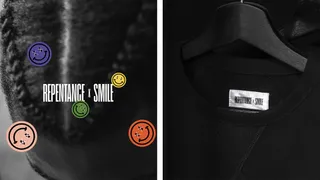
Repentence x Smile by MadeByShape
When it comes to defining your branding and website, inspiration doesn’t need to be limited to competitors or even your industry. Aspirational brands can come from anywhere – from global icons to local favourites. Sharing examples of brands or visuals you admire gives us a sneak peek into your style goals.
Go beyond the surface and explain why certain brands stand out to you. Think about specific elements such as:
👉 Colour schemes: Are you drawn to bold, vibrant palettes, or do you prefer soft, neutral tones? What emotions do these colours evoke, and why do they resonate with your brand vision?
👉 Tone of voice: How do you want to sound? Friendly and approachable, or polished and professional? Your tone sets the mood for how people perceive your brand, and we’ll explore this further below.
👉 Typography: Does a clean, modern font catch your eye, or do you prefer something more decorative or classic? Fonts play a key role in your visual identity.
👉 Photography techniques: Do you admire candid, lifestyle shots or sleek, editorial imagery? Photography creates a connection with your audience, so identifying your preferred style is crucial.
👉 Illustration styles: Whether it’s bold graphic shapes, hand-drawn elements, or minimalist icons, illustrations can add a unique touch to your branding.
Surely you know by now – we love detail 😍. The more we know, the better. Explain what it is about a brand’s logo, layout, or content that speaks to you. For example:
👉 Is there a website you love because of its clean navigation?
👉 Do you admire a social media account that consistently nails its tone of voice?
👉 Is there a campaign that stuck with you because of its storytelling or visuals?
Your inspiration doesn’t have to align directly with your industry. Sometimes the most creative ideas come from looking outside your market. We want to know what catches your eye and how it reflects the direction you want for your own branding and website.
Ultimately, understanding your aspirational brands helps us bring your design and strategy to life. So don’t hold back – tell us everything!
If your brand could talk, what would it say – and how would it say it? Define your tone, from casual and cheeky to formal and polished. Sample content is always a plus.
Your tone of voice and visual identity go hand in hand. When they’re done right, they work together as a team.
Even if you haven’t nailed down your logo, typography, or colour palette yet, start by focusing on your brand voice. Think about your archetype and values – how would your brand character speak to a room?
Go a bit deeper and note down specifics like:
How formal or informal is your tone?
Do you prefer short and snappy sentences or more complex ones?
Are you team “cannot” or “can’t”?
Active voice or passive?
It’s also a good idea to include some example copy in your brand brief – like how your tone might sound on a website, blog, or social media. This helps anyone writing for your brand stay consistent and gives designers the context they need to create visuals that match your vibe. It makes the whole process quicker and smoother. Including the specifics when working with an agency is key as not everyone speaks the same voice.
Got content ready to go? That’s what we like to hear 😅. Need help with copy, photos, or videos? We’ve got you.
Planning your content early is a huge plus – it sets the foundation for everything and keeps the project on track. Are you using existing content, or will you need fresh copy, images, or videos? If the answer is “Nah, we’ve got nothing,” don’t panic – we’re here to help!
We can handle it all: finding stock photography, writing copy, art-directing photoshoots, organising videographers, or creating illustrations. Content delays are one of the biggest reasons web projects slow down, so figuring out who’s doing what from the start is key to keeping things rolling.
Plus, having a clear plan for your content ensures your site feels cohesive and aligns perfectly with your vision. Let’s get it sorted early so we can bring your site to life without a hitch!
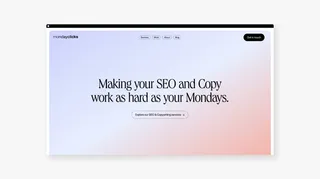
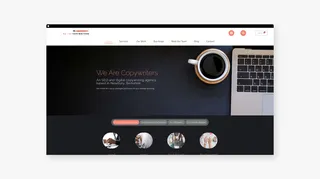

If you have existing brand assets, make sure to share them:
Logo files (AI, EPS, or SVG format).
Brand colours (HEX or RGB codes).
Typography files (WOFF, OTF).
Any brand guidelines or visual references.
This ensures your branding is consistent across all platforms. Don’t worry if you don’t have any – we’ll work with you to create everything from scratch, ensuring your brand identity is cohesive and tailored to your goals.
Need integrations, multilingual support, or a specific hosting setup? Let’s get all the details down.
👉 Let us know about any specific technical requirements upfront – it’s key to avoiding delays and keeping things on track.
👉 Think about the functionality your website needs. Does it need to integrate with other systems like client login areas or databases? Should it be multilingual? Do you need an interactive map or an online payment system?
👉 Even small details can make a big difference to us, especially when it comes to development. The clearer we are on the scope from the start, the more accurate and tailored our proposal will be!
The clearer you are on technical needs, the smoother your project will run.
Your website needs a home, and that’s where hosting comes in. 🏡 Clarify:
Do you already have a domain, or do you need one?
Will you require hosting, or is your site already hosted elsewhere?
Do you need help setting up email addresses?
Sharing these details upfront avoids any hiccups later on.

Flashmasters x MadeByShape
Think about the support you’ll need after launch. From hosting to ongoing maintenance, we’re here to help keep your site running smoothly. Your website is made up of lots of files, code, and images – it all needs somewhere to live, which is where hosting comes in. Will you need hosting? Do you have a domain or need to get one?
Every client is different. Some are new to websites and need us to handle everything. Others have in-house teams and just need technical support or help with SEO. Let us know what kind of support you’re after or your budget, and we’ll tailor a plan to suit your needs. 🤝
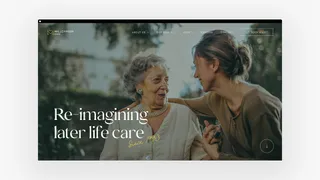
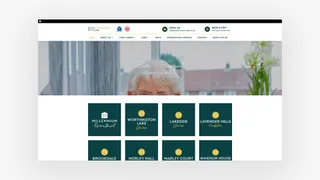

That’s everything you need to know when it come to branding and website briefs. Yes, it’s a lot of info, but the more details you can share with your agency, the quicker you’ll get a clear response – and the more accurate the costs and timelines will be.
Still feeling stuck? 😅 Don’t worry, we’re pros at MadeByShape, helping shape a brief to match your vision. Just drop us a message, and we’ll happily guide you through it. We primarily build websites using Craft CMS, but we also work with Craft Commerce and Shopify.
Got a project in mind? Whether it’s branding, web design, or both, we’re ready to chat – let’s make it happen. Get in touch.
Download our bible-sized brief template document which will help you write a killer branding & website brief that gets you the desired results, every time.
I'm Kerry. Content Writer at Shape – if you don't find me at my desk, I'm probably on holiday again 🌎✈️